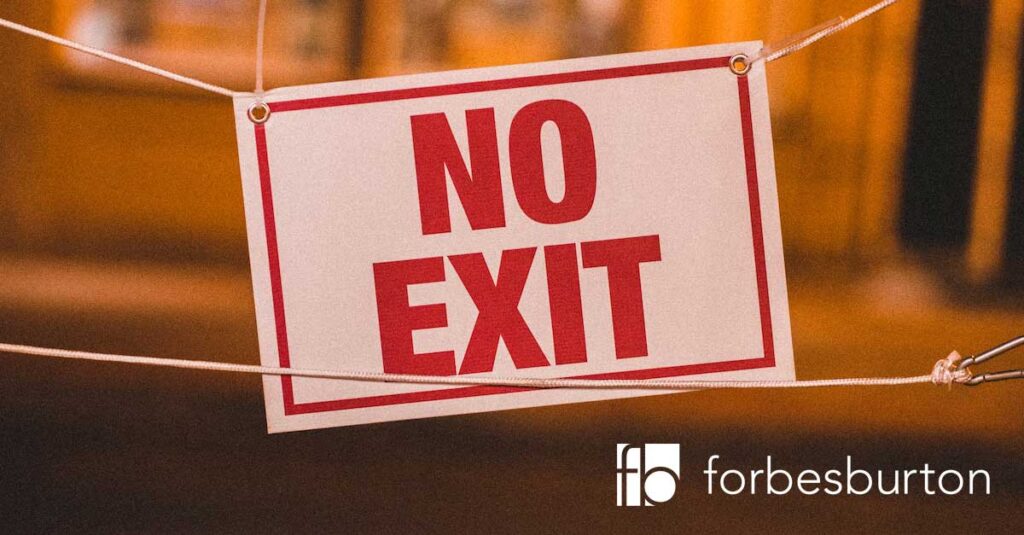
No, it is not illegal to dissolve a company with debts, even if it has a Bounce Back Loan.
However, the process must comply with all statutory responsibilities.
The administrative dissolution process is based on the benefits of using Sections 1003 to 1008 of the Companies Act 2006 (formerly Section 652 of The Companies Act 1985) which are available to limited companies.
There are many websites that state that you can’t dissolve a company with debts. This is incorrect.
There isn’t any legislation which says that you can’t dissolve a company that has debts. In fact, the official guidance from the government states that you must tell creditors, not that there should be no outstanding debt.
Therefore, you can dissolve a company with debts, but the process is far more involved than simply sending a DS01 form to Companies House.
It should be noted that liquidation is always the preferred option for closing a limited company and that dissolution should only be used when liquidation isn’t possible.
Deciding which is the best route for company closure
There are two ways to close a limited company with debts in the UK:
- Creditors’ voluntary liquidation (CVL): This is a formal insolvency process that allows the company to be wound up and its debts repaid to creditors as far as possible. Once liquidated, the company debts will be written off.
- Administrative dissolution: This is an informal process that can be used if the company has no assets or funds to pay for a CVL. The company is removed from the Companies Register whilst maintaining the directors legal obligations.
How to decide on the best closure route
Step 1: Assess the company’s financial position
The first step is to assess the company’s financial position. This will involve identifying all of the company’s debts and assets.
Debts may include:
- Outstanding National Insurance and PAYE on payrolls
- Corporation tax for the final period
- Overdrafts and bank loans
- Final accountancy fees
- Money owed to directors or shareholders of the company
- Amounts owed to trade suppliers
- Lease agreements or other commitments
- VAT for the final period
Assets may include:
- Cash in the bank
- Inventory
- Equipment
- Property
Step 2: Choose the right closure method
Once you have assessed the company’s financial position, you can decide which closure method is best.
If the company has enough assets or funds to cover the cost of a liquidation, which can cost from around £5,000, you will be able to close it through liquidation.
If the company has no assets to fund a liquidation, you can consider closing it through dissolution.
Step 3: Take the necessary steps
If you decide to close the company through a Creditors Voluntary Liquidation, you will need to appoint a liquidator.
The liquidator will be responsible for selling the company’s assets and repaying the creditors.
If you decide to close the company through dissolution, you will need to file a DS01 form with Companies House, however it may be wise to seek professional advice to ensure all statutory requirements are met.
Step 4: Get professional advice
It is important to get professional advice from an insolvency specialist when closing a limited company with debts.
They can help you assess the company’s financial position, choose the right closure method, and take the necessary steps.
Thinking of dissolving your company?
Does your limited company qualify for dissolution?
Find out if it qualifies for dissolution with our free, no-obligation Limited Company Dissolution Test →
Or, call us now on 0800 975 0380 for some free, no-obligation advice.
Statutory responsibilities for dissolving a company with debt
The company can only be dissolved if the following conditions apply:
- The company has not traded for three months; this must be a genuine cessation of trade
- The creditors and any other stakeholders are contacted, to inform them that the company is to be dissolved under this process
- Creditors are given two months to consider the request to dissolve the company and can reject this request by objecting to the dissolution
- The company has not changed its name in this period
- Has not engaged in any activity other than that of concluding the affairs of the company
Who to tell about the closure application
The directors who make the application must, within 7 days of sending the closure application to the registrar, also send a copy to:
- members, usually the shareholders
- creditors, including all existing and likely creditors such as:
- banks
- suppliers
- former employees if the company owes them money
- landlords or tenants (for example, where a bond is refundable)
- guarantors
- personal injury claimants
- HMRC and Department of Work and Pensions (DWP)
- employees
- managers or trustees of any employee pension fund
- any directors who have not signed the form
The company’s directors must also send a copy of the application to any person who, at any time after the application has been made, becomes a:
- director
- member
- creditor
- employee
- manager or trustee of any employee pension fund
This must be done within 7 days of the person becoming one of these.
This obligation continues until the dissolution of the company or the withdrawal of the application.
You’ll be committing an offence by not sending the notice to the relevant parties, and could face a fine or, in the most serious cases, a maximum of a 7 year prison sentence.
Can a dissolved company be reinstated?
HMRC, or anyone else, has the power to reinstate any company via Companies House, and they can do this anytime in the future.
As a director, it is important that you contact all creditors before making attempts to close your company to remove the likelihood of this happening.
However, if a company was dissolved with no assets, then even if it was reinstated there would still be no assets and potentially makes the reinstatement process worthless.
Get free, no-obligation, and impartial advice
If you want to get some free, no-obligation advice on which is the best route for closing your company then please call us on 0800 975 0380 or email advice@forbesburton.com
We can look at which will be the best option for you and if liquidation is the right route rest assured one of our licenced insolvency practitioners will be able to help.
Contains public sector information licensed under the Open Government Licence v3.0.
Author

Ben Westoby
ben.westoby@forbesburton.com
Related Articles
We're here for you.
As a dedicated team of Advisers and Consultants our aim is to help you fix the issues and solve the problems within your business.
Find out more →

